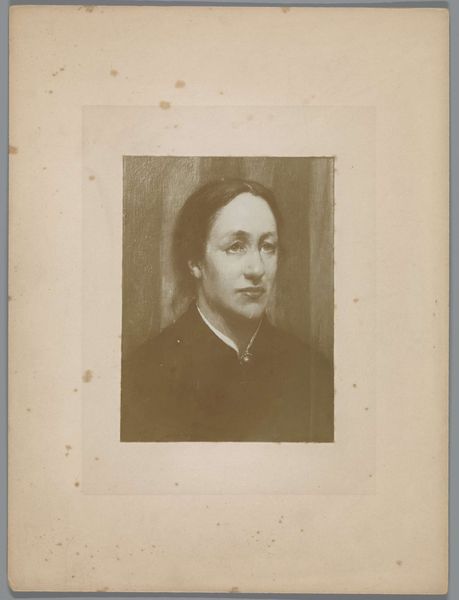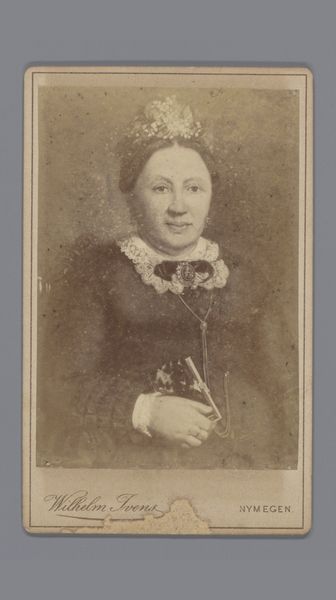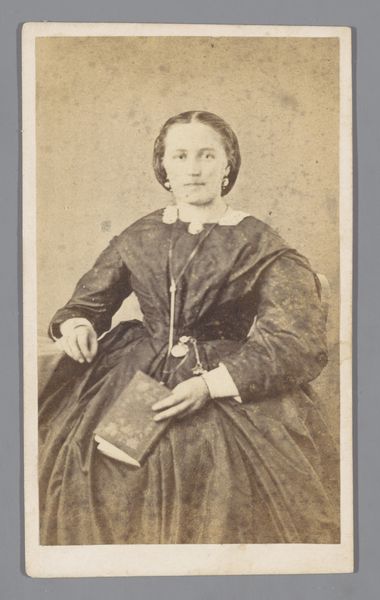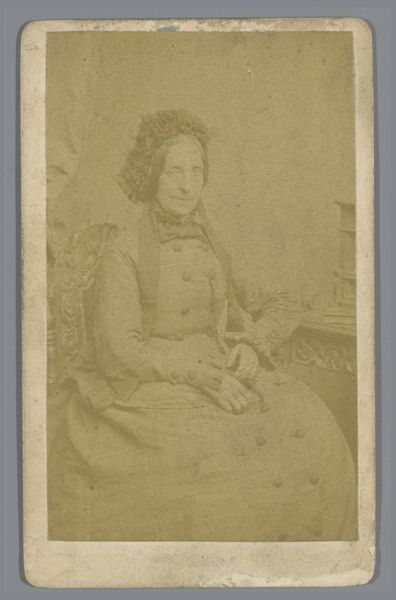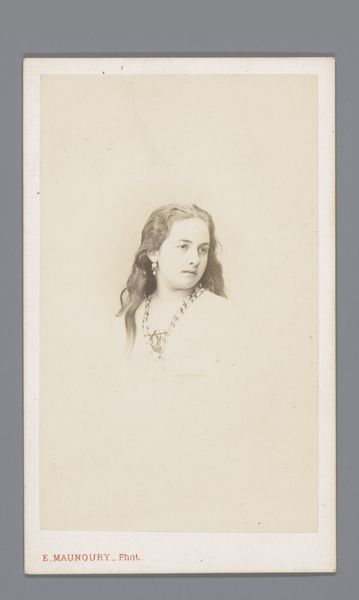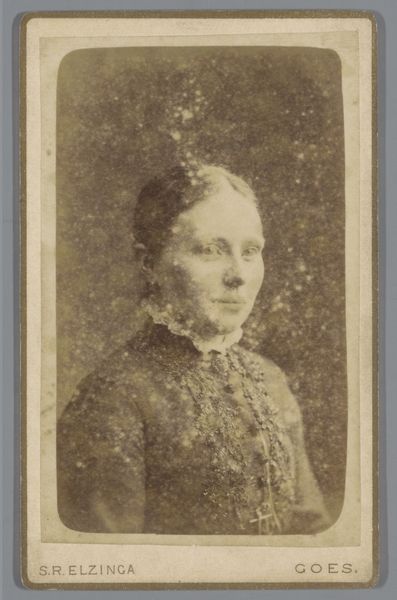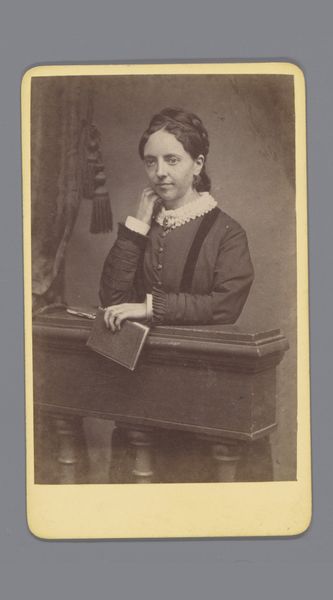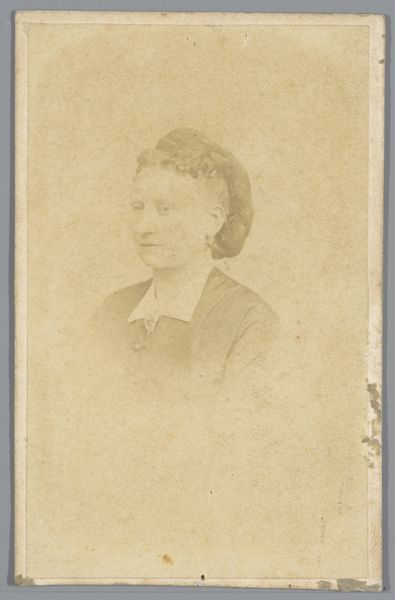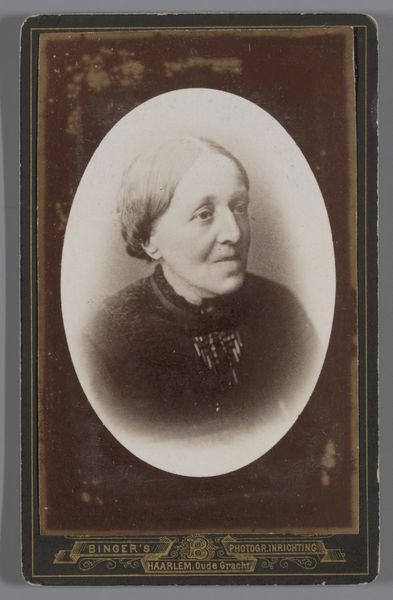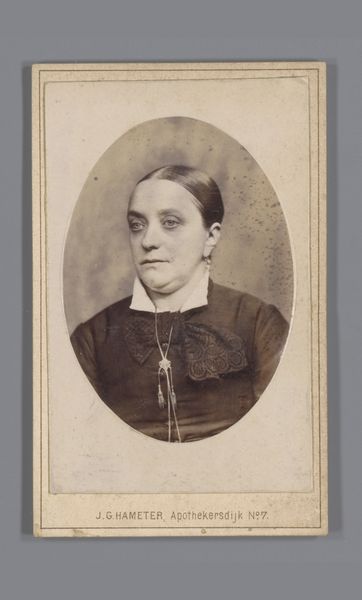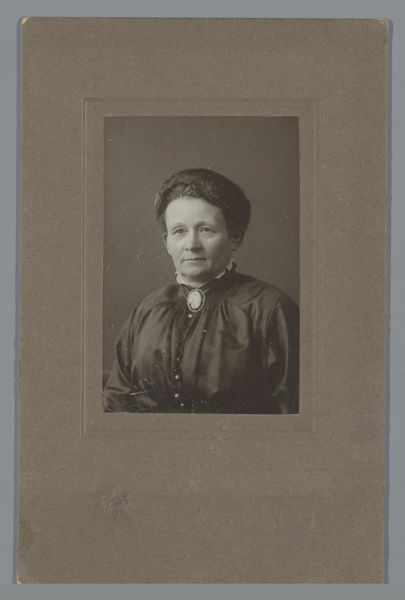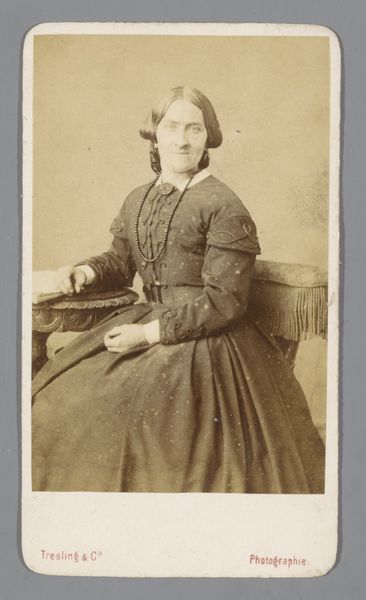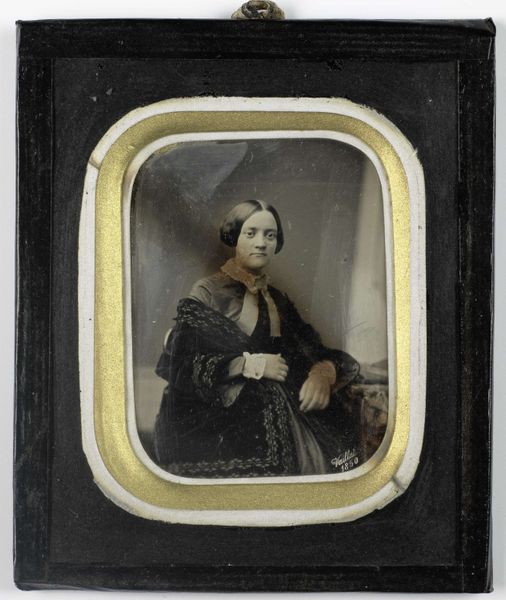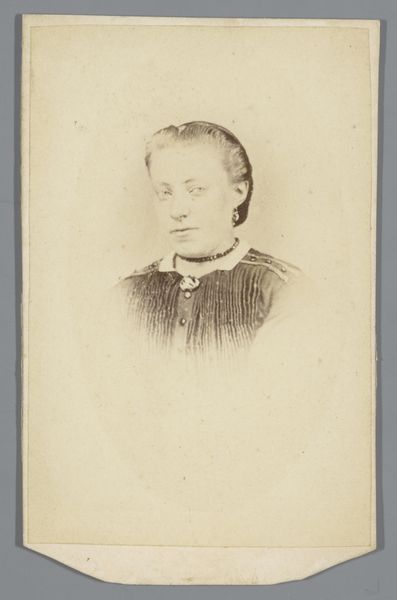
Portret van Johanna Stam, de echtgenote van de schilder Herman van der Weele 1880 - 1900
0:00
0:00
photography, gelatin-silver-print
#
portrait
#
photography
#
gelatin-silver-print
#
realism
Dimensions: height 258 mm, width 199 mm
Copyright: Rijks Museum: Open Domain
Curator: This photograph presents a compelling study in light and shadow. There's a delicate balance between revealing detail and obscuring form. Editor: It’s moody, isn’t it? Melancholy, even. It feels like peering through time, this faint portrait holds its secrets close. Curator: The artwork is a gelatin silver print dating from 1880-1900, titled "Portret van Johanna Stam, de echtgenote van de schilder Herman van der Weele," or "Portrait of Johanna Stam, wife of the painter Herman van der Weele". The choice of the gelatin silver process itself speaks volumes about photographic practices in that era. Editor: How so? Is it just about technical capabilities? Curator: No, more than that. Gelatin silver prints allowed for greater tonal range and image sharpness than earlier photographic processes. Its commercial viability was expanding in these later years which changed access to image-making to beyond the art world. You could easily produce family photographs. The print itself—how was it circulated, displayed, and received at the time? Was it merely a private memento, or intended for wider dissemination within artistic circles? And do we know the identity of the photographer? Editor: Those are great questions. And it leads to more questions: What can this portrait reveal about the representation of women at the fin de siècle? About the role of wives and female visibility? Curator: Exactly. Notice, too, the ornate lace detailing on her cuffs and what seems to be intricate beading on her cloak. What can the specific design and the source of materials used tell us? The dressmaking required skilled labor, indicating access to certain modes of production and consumption that would be worth further analysis to unlock clues about her socio-economic positioning. Editor: So it’s a confluence of wealth, technology, and taste coming together to define status. But beneath it, as a viewer, I sense her personality struggling to emerge. Perhaps it's the photographic process limiting her expressiveness. Curator: That very tension makes it fascinating, don't you think? She exists as both object and individual, captured at the intersection of material and cultural forces. Editor: Definitely. It shows how something as seemingly simple as a portrait unveils larger histories. Curator: Precisely. It’s more than just an image. It is the complex tapestry of labour, image-making technology, and societal position. Editor: The ghost of the past—forever captured in light-sensitive gelatin.
Comments
No comments
Be the first to comment and join the conversation on the ultimate creative platform.
